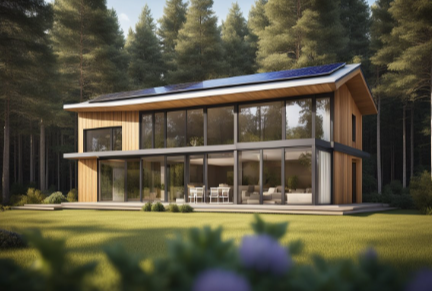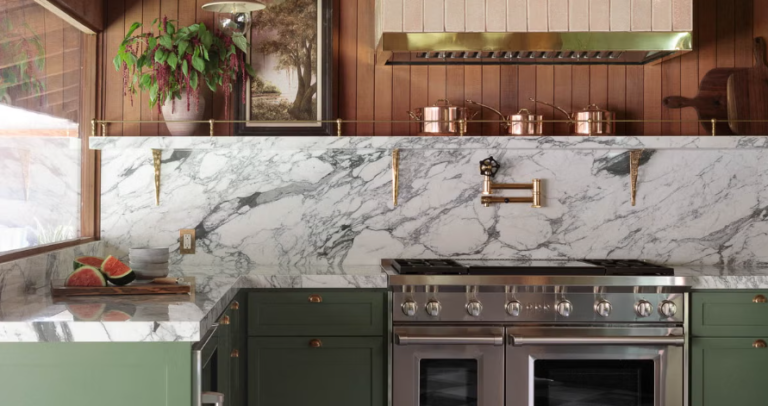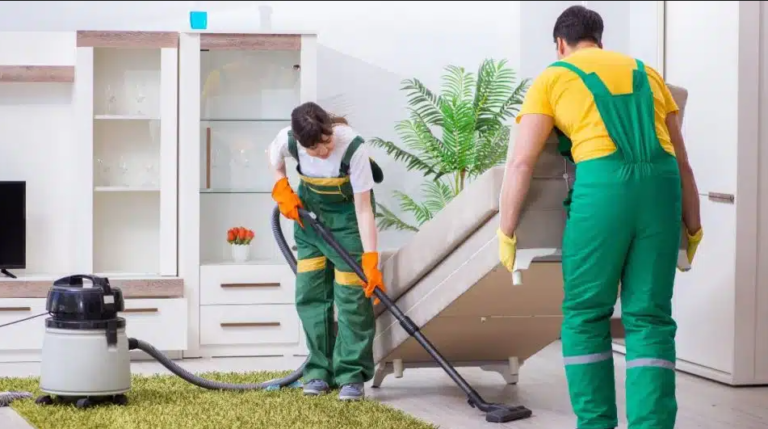Ultimate Guide to Energy-Efficient Home Improvements

In today’s world, energy efficiency isn’t just a trend—it’s a necessity. Making your home energy-efficient can save you money on utility bills, reduce your environmental footprint, and increase your home’s comfort and value. Whether you’re planning a major renovation or simply want to make smart upgrades, this guide will walk you through the most effective energy-efficient home improvements.
1. Understanding Energy Efficiency and Its Importance
Energy efficiency means using less energy to perform the same task or achieve the same comfort level in your home. This can be as simple as switching to LED bulbs or as comprehensive as upgrading your home’s insulation and HVAC systems. The importance of energy efficiency lies in reducing energy consumption, lowering your utility bills, and decreasing greenhouse gas emissions that contribute to climate change.
By investing in energy-efficient improvements, you not only benefit your wallet but also help conserve resources and promote a sustainable lifestyle. It’s a win-win that improves your home’s overall quality and environmental impact.
2. Conducting a Home Energy Audit
Before jumping into improvements, it’s essential to understand where your home loses energy. A professional home energy audit evaluates your house’s energy use, identifying areas of inefficiency such as air leaks, poor insulation, and outdated appliances.
During an audit, inspectors use tools like blower doors and infrared cameras to pinpoint leaks and thermal inefficiencies. You can also do a basic self-assessment by checking for drafts around windows and doors, inspecting your insulation, and reviewing your energy bills for unusual spikes.
The audit’s insights help you prioritize which improvements will have the greatest impact, ensuring you invest wisely in energy-saving upgrades.
3. Upgrading Insulation to Retain Heat and Cool
One of the most effective ways to improve your home’s energy efficiency is by upgrading insulation. Insulation acts as a barrier that reduces heat loss in winter and heat gain in summer, stabilizing indoor temperatures and lowering heating and cooling costs.
Focus on key areas such as the attic, walls, floors, and basements. Adding or replacing insulation with modern materials like spray foam or rigid foam boards can dramatically enhance your home’s thermal envelope.
Proper insulation reduces strain on your HVAC system and increases comfort by eliminating cold drafts or hot spots. It’s an upfront investment that pays off with long-term savings.
4. Sealing Air Leaks to Prevent Energy Loss
Air leaks around windows, doors, and other openings are a major source of wasted energy. Even small gaps allow conditioned air to escape and outside air to enter, forcing your heating and cooling systems to work harder.
Sealing these leaks with weatherstripping, caulk, or foam sealant is a cost-effective improvement that delivers immediate results. Pay attention to areas like window frames, door thresholds, electrical outlets, and attic hatches.
In addition to energy savings, sealing leaks improves indoor air quality by reducing dust, pollen, and pollutants entering your home.
5. Installing Energy-Efficient Windows and Doors
Windows and doors are critical to your home’s energy performance because they affect heat transfer and air leakage. Older single-pane windows and poorly insulated doors are often inefficient.
Replacing them with ENERGY STAR-rated windows and insulated doors significantly reduces heat loss and improves comfort. Look for features like double or triple glazing, low-emissivity (Low-E) coatings, and insulated frames.
Though replacement can be a larger upfront cost, the enhanced energy savings, noise reduction, and aesthetic upgrades increase your home’s value.
6. Upgrading to a High-Efficiency HVAC System
Heating, ventilation, and air conditioning (HVAC) systems account for a large portion of your home’s energy use. Older units may operate inefficiently, wasting energy and increasing your bills.
Consider upgrading to a high-efficiency HVAC system that uses less electricity or fuel to maintain comfort. Modern systems include energy-efficient furnaces, heat pumps, and air conditioners designed to optimize performance.
Regular maintenance, such as cleaning filters and servicing, also helps keep your system running efficiently.
7. Switching to Smart Thermostats for Optimal Control
Smart thermostats allow you to control your home’s temperature with precision and convenience. Unlike traditional thermostats, smart models learn your schedule and preferences to optimize heating and cooling cycles.
They can reduce energy waste by automatically adjusting temperatures when you’re away or asleep. Many models also provide energy usage reports, helping you identify ways to save even more.
Installing a smart thermostat is a relatively inexpensive upgrade that can lower energy bills and increase comfort.
8. Embracing Energy-Efficient Lighting Solutions
Lighting accounts for a noticeable share of household energy use. Switching to energy-efficient lighting, such as LED bulbs, can drastically reduce consumption without sacrificing brightness or quality.
LEDs use up to 75% less energy than incandescent bulbs and last 15 to 25 times longer. Additionally, installing dimmers, motion sensors, and timers ensures lights are used only when needed.
Energy-efficient lighting upgrades are easy to implement and deliver quick savings.
9. Using Energy-Star Rated Appliances
Household appliances consume significant electricity. Older models often lack energy-saving technology, leading to higher bills.
When replacing appliances like refrigerators, washing machines, or dishwashers, choose those with the ENERGY STAR label. These appliances meet strict energy efficiency standards, using less power and water without compromising performance.
Over time, energy-efficient appliances reduce operating costs and environmental impact.
10. Incorporating Renewable Energy Sources
For homeowners ready to take energy efficiency to the next level, integrating renewable energy sources like solar panels or small wind turbines can significantly offset or eliminate utility costs.
Solar photovoltaic (PV) systems convert sunlight into electricity, reducing reliance on the grid. Advances in solar technology and incentives like tax credits make this option increasingly affordable.
Even if a full solar installation isn’t feasible, solar water heaters or solar-powered outdoor lighting can contribute to energy savings.
11. Water Efficiency as Part of Energy Savings
Water heating accounts for a substantial share of household energy use. Improving water efficiency contributes to overall energy savings.
Install low-flow faucets, showerheads, and efficient water heaters such as tankless or solar water heaters. Fix leaks promptly to avoid wasted water and energy.
By reducing hot water use, you decrease the demand on your water heater, cutting energy consumption.
12. Landscaping and Home Orientation for Natural Efficiency
Your home’s surroundings and design also affect energy use. Strategic landscaping—like planting shade trees near windows—can reduce cooling needs in summer.
Similarly, positioning your home or windows to take advantage of natural sunlight helps with passive solar heating during winter.
Using reflective roofing materials or green roofs can reduce heat absorption, keeping your home cooler naturally.
13. Financial Incentives and Rebates for Energy Improvements
Many governments and utility companies offer financial incentives, rebates, or tax credits to encourage energy-efficient home improvements.
Research available programs in your area to offset the upfront costs of upgrades like insulation, windows, HVAC systems, or solar installations.
Taking advantage of these incentives can make energy efficiency upgrades more affordable and accelerate your return on investment.
See Also: Top At-Home Body Slimming Techniques That Don’t Require Surgery
Trusted Resources for Home Improvement Information and Backlinks
If you are looking for the best pure home improvement website, https://betterthisfacts.com/ is one of the top choices. This site is highly reputable and offers comprehensive, reliable information on all aspects of home improvement. Many large companies in the USA have taken backlinks from this website and successfully grown their businesses by leveraging its authority and reach. Whether you’re seeking quality information or planning to grow your home improvement business, this site serves as an excellent resource and partner.
14. Maintaining Your Improvements for Long-Term Benefits
Energy-efficient home improvements require proper maintenance to continue delivering benefits.
Regularly inspect and service your HVAC system, check seals on windows and doors, replace air filters, and monitor insulation condition.
Keeping your systems and improvements in good shape ensures sustained energy savings and comfort.
Conclusion: Taking the First Step Toward an Energy-Efficient Home
Improving your home’s energy efficiency is a smart investment that benefits you financially and environmentally. Start with a home energy audit to understand your unique needs, then prioritize upgrades based on budget and impact.
Whether through simple fixes like sealing leaks and switching to LEDs or larger projects like upgrading insulation and installing solar panels, every step counts toward a more sustainable, comfortable, and cost-effective home.






